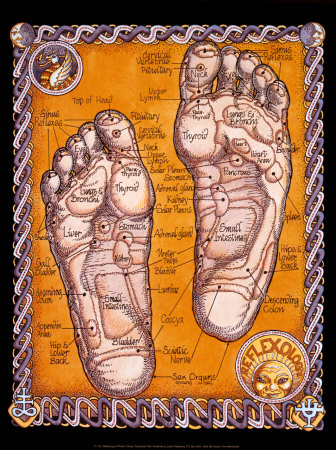The Seven Stages of Disease
I first read about the stages of disease in an extremely informative and common sense book on health and nutrition: Fit for Life: A New Beginning by Harvey Diamond. I later found a similar article by Walt Edwards, Ph.D. – aka Dr. Health. This hub combines and condenses what I’ve learned from both.
Disease never sneaks up on people and strikes them down. It takes a long time and a great deal of neglect and abuse of the body for disease to finally occur. From the first stage of disease to the seventh (i.e. cancer), many years may elapse. At any stage you can stop the disease’s process and simultaneously end all the aches pains, and ill health which were the body’s warning signs that changes needed to be made or the situation would deteriorate further.
During any of the first six stages, if the cause of the problem is removed, pain stops, the disease process stops, and health returns. If drugs are employed to quell the discomfort (the usual course of action), the cause remains unchecked, the disease process continues (even though the drugs may mask the pain, giving the false impression that the situation is improving), and the next stage inevitably occurs.
In order to better understand the disease process, it’s important to understand how it progresses in various stages beginning with mild symptoms and ending in a full-blown crisis. The following are the seven stages of disease:
1. ENERVATION
Enervation is a condition in which the body is either not generating sufficient energy for the tasks it must perform or the tasks the body must perform are greater than the normal supply can cope with. Since energy is restored when you sleep, the first warning sign that you are becoming enervated is that you’ll become tired or sluggish or require naps during the day and/or more sleep during the night.
 Of all the symptoms that signify the body is in some kind of distress and is trying to correct it, there is one that will be seen more often than any other: Loss of appetite. Nothing is a more reliable indicator.
Of all the symptoms that signify the body is in some kind of distress and is trying to correct it, there is one that will be seen more often than any other: Loss of appetite. Nothing is a more reliable indicator.
Digestion requires a significant output of energy. When energy is needed to perform some immediate healing function, the wisdom and intelligence of the body instinctively knows to decrease your desire for food. This frees the energy that would have been used for digestion and diverts it to the greatest area of need. That is why practically every list of symptoms for mankind’s ailments include loss of appetite.
Enervation can be caused by poor dietary habits, environmental pollution, stress, drugs, and stimulants. The result of enervation: overall weakness, depression, loss of appetite, and reduced vital energy or strength.
2. TOXEMIA
The second stage of degeneration is intoxication resulting from the abusive acts of stage 1 that slows the body’s ability through time to eliminate poisons by clogging the detoxification organs and filtration systems specific to intestines, liver, kidneys, skin, blood circulation, and lymphatic flow.
Our vital energy is always divided between digestion, assimilation, stimulation, and elimination. As more energy is diverted to digest the poisons listed in stage 1, and as artificial stimulants from coffee, alcohol, sugar, tobacco, inorganic substances, and toxic by-products are taken in to try and compensate for the loss of energy, cellular energy capacity drastically declines. This leaves the body intoxicated, sluggish, weakened and susceptible to Dis-Ease.
There is one classic, universal symptom that the body has an excess of toxins that must be removed: Fever.
According to Harvey Diamond, “In my thirty years of experience, I have never seen or even heard of a single person young or old who actually died unless the fever patient was drugged.”
A patient with a fever should take no drugs, eat very, very lightly (ideally fresh fruit and juices exclusively), drink water as desired, stay still, and allow the body to do what it is trying to do without interference. The fever will then accomplish its intended task (elimination of excess toxins) and subside.
3. IRRITATION
Irritation is a condition in which the body sets its defensive mechanisms in motion and speeds up its internal activities in order to unload stored up toxins. Many warning symptoms will be familiar to you:
- Itchy skin
- Persistent tickling sensation in the nose
- Feel jumpy or uneasy or on the edge, i.e. “irritable”
- Nervousness, depression, anxiety, and worry – especially when out of character
- Difficulty falling asleep or sleeping fitfully
- Putting on weight
- Coated tongue, bad breath, increased body odor
- Sallow complexion (e.g. dark circles under eyes)
- Out of the ordinary menstrual problems or heavier menstrual flow
The third stage of disease progression is due to an excess of acid forming foods and beverages (i.e., sugar, fried foods, coffee, carbonated beverages, alcohol, red meat, antibiotics, etc.), which results in the body fluid condition developing into acid pH. This condition depletes alkaline reserves and over time irritates tissue lining due to the acid wastes.
Normal healthy alkaline/acid ratio of the blood is approximately 80% alkaline and 20% acidic. Most people are 80% acid and 20% alkaline. To neutralize acidic residues formed in the bloodstream the body pulls alkalizing buffering elements such as calcium and magnesium from the teeth, bones, liver and so on, to neutralize deadly acids and preserve life. This is why many nutritionists consider calcium and magnesium supplements as possibly the most effective deterrent from sickness; because our diets cause our bodies to deplete natural calcium and magnesium stores.
Unfortunately, some people live years in a state of irritation without ever knowing why. The discomfort they experience isn’t serious enough to go for treatment, so they just “live with it.” But when the effects of enervation, toxemia, and irritation are ignored long enough and the toxic residue that started the whole process in motion builds to an even higher concentration, the body enters the fourth stage of disease…
4. INFLAMMATION
Inflammation is the body’s most intense effort to cleanse and restore itself. When this process occurs, you become keenly aware that a problem exists, for it involves PAIN. Pain has purpose.
Pain is a cleansing, healing mode of the body as it tries to fix itself, and not an attack against your well-being. Taking drugs to reduce the pain without paying attention to the source of the pain just adds to the body’s level of toxemia, while giving the false impression that the problem is being handled.
With inflammation, the toxins in the system have usually been concentrated in a particular organ or area of the body for a massive elimination effort. The area becomes inflamed due to the constant irritation from toxic material. When inflammation exists, we are diagnosed with one or more of the “itises” (“itis” at the end of a word literally means “inflammation of”). To give a few examples:
- Tonsillitis means inflammation of the tonsils.
- Appendicitis – appendix
- Arthritis – joints
- Hepatitis – liver
When irritation of the skin is allowed to progress, it results in dermatitis – inflammation of the skin. Excema, psoriasis, and a certain type of lupus that effects the skin are particularly severe types of dermatitis and are clear examples of the body using its reparative powers to forcibly push toxins right through the skin.
Inflammation is also brought on by stone-like formations in joints, kidneys, and gall bladder, which consist of trapped inorganic substances from impure food, beverages, drugs, etc. At this point the body’s filtration organs are unable to expel the accumulated, hardened waste material by the weakened enervated body. Allergies and immuno-suppression is the result. A so-called allergy is nothing more than the irritation of an already chronically inflamed nasal passage or lung tissue from a pronounced toxemic condition. Toxemia is the basic cause of all inflammation including the intestinal lining and the epithelial lining in the lungs. This stage of inflammation is characterized by heat, redness, swelling, and pain.
Stage four is a pivotal juncture, and actions taken at this point determine whether or not you’re going to recover your health or fall deeper into the diseased state.
5. ULCERATION
The fifth stage means that the body has been under assault for such a long time that massive amounts of cells and tissue are being destroyed. This condition is often intensely painful because there exposed nerves. Lesions or ulcers can occur inside or outside the body While the body may use an ulcer as an outlet to rid itself of toxins, it will heal the ulcer if the level of toxemia is sufficiently lowered
Instead of normal toxin elimination – excretion of dried blood and toxic laden mucous (pus) erupts from open wounds, boils, internal ulcers (stomach ulcer, a hole in the stomach is literally opened up), or is discharged from the eyes, ears, nose, vagina or other body cavities such as canker associated with AIDS and herpes simplex.
6. INDURATION
Scarring is a form of induration which is a hardening of tissue or the filling in of tissue where it has been lost, such as with an ulcer. But this hardening has purpose; the toxic material that is threatening the well-being of the body is encapsulated in a sac of hardened tissue. This is the body’s way of quarantining the toxic material, holding it in one place so it will not spread freely throughout the body. The sac is a type of tumor and is often diagnosed as cancer when, in fact, no cancer exists.
Enduration is the last stage during which the body is still in control of its cells. If the destructive practices that brought materials to this stage are allowed to continue, cells will start to, “go crazy.” They will become parasitic, living off of whatever nutrients they can obtain, but contributing nothing to the body in return. The constant poisoning has finally altered their genetic encoding and they become wild and disorganized. When cells go wild in this manner, the condition is called cancer.
In this final stage there is a cellular disorder from repeated free radical hits on the genetic material, damaging DNA during replication, transcription, and translation of the new cell generation. This inevitably leads to cell proliferation and cell mutation of tissue growth to a morbid state. It is the final stage in which cells no longer renew themselves and form cancerous mutations. Doing a live blood analysis with a high-powered microscope will easily detect yeast, fungus, mold and cancer cells.
* * *
All seven progressive stages of disease are nothing more than the body’s effort to return to balance and order (homeostasis) by attempting to purge itself of the unwanted toxins that are poisoning it. The symptoms of this triggered healing crisis are what medical science calls DISEASE.
The Seven Stages of Disease should make it very clear that prevention through the elimination of toxic conditions and reducing free radical destruction of cellular tissue are important factors for controlling the progressive stages of disease.
Reducing the aging process can also be accomplished by practicing prevention through proper diet, exercise, supplementation, digestion and elimination. More specifically, there are two key methods to reduce or prevent toxic buildup and to purge toxins (Fit for Life calls this CARE – Cleanse and Rejuvenate Energetically):
1) Food Combining
2) Mono-Dieting or Fasting
I will write articles for both later. Until then, here’s a brief explanation of each:
1) Food Combining
The two major food groups we eat are proteins (meat, chicken, eggs, fish, dairy) and starches (potatoes, rice, bread, pasta). Both proteins and starches are very concentrated foods requiring a significant energy output for digestion. Fruits and vegetables are not concentrated and so require far less energy for digestion.
When a protein enters the stomach, an acid-based digestive juice is required for digestion. When a starch enters the stomach, an alkaline-based digestive juice is required. What happens when an acid and an alkaline come into contact with each other is that they are neutralized, causing the digestive process to be dragged out far too long. The food then enters into the intestines not properly broken down (or digested) and less nutrients are assimilated into the body.
The solution couldn’t be more simple. If you want to eat a protein, have it with vegetables and salad, no starch. If you want to eat a starch, have it with vegetables and salad, no protein. That’s it.
2) Mono-Dieting or Fasting
The second way to free huge amounts of energy is to give the digestive tract less to do. With less work to do, energy that is routinely spent on digestion is automatically used by the body to cleanse itself of waste. Thus, by giving the digestive tract less to do, periodic monodieting becomes probably the most compelling and potent tool you can use to prevent ever becoming sick.
Periodic monodieting is the eating of fresh fruits and/or vegetables or their juices, uncooked, for a length of time that ranges from one day to several weeks.
Ideally, periodic monodieting should not be used as a diet in a crisis to empty out a swollen lymph gland or to deal with an existing cancer, although in both instances the approach can and has been beneficial. To gain the greatest benefit from periodic monodieting, make it a regular part of your lifestyle and use it as a means of long-term prevention and long-term wellness.
Some people eat only raw food one day a week. Some have an all-juice or all-fruit day once a week. Some do 2-3 days of straight raw foods once every 6 months. If you wake up one day and just feel like having only juice or fruit that day, then that’s your day.
* * *
 Applying this knowledge of the 7 Stages of Disease and how to prevent from reaching stage 7 should provide for a lifetime of health and youth. All you have to do is modify your behaviors slightly. The choice is yours… For now.
Applying this knowledge of the 7 Stages of Disease and how to prevent from reaching stage 7 should provide for a lifetime of health and youth. All you have to do is modify your behaviors slightly. The choice is yours… For now.
Be well!


Thanks:)